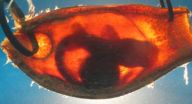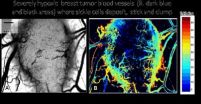(Press-News.org) January 10, 2013 (Toronto) - Cutting in and weaving, speeding, and hostile displays are among the top online complaints posted by drivers, according to a new study by the Centre for Addiction and Mental Health (CAMH) recently published in an online issue of Accident Analysis and Prevention.
Driver aggression is a major safety concern and researchers estimate this behaviour is a factor in nearly half of all motor vehicle collisions. Identifying the underlying causes and strategies for preventing driver aggression continues to be a priority.
CAMH researcher Dr. Christine Wickens reviewed thousands of entries posted on RoadRagers.com, a website that invites drivers to submit complaints about unsafe and improper driving.
Following a previous study evaluating complaints submitted to the Ontario Provincial Police, Dr. Wickens turned her attention towards the crop of new websites that ask drivers to describe the unsafe driving practices they've observed.
"These websites can tell us more about what people are doing out there in the real world," she explained.
Dr. Wickens, a post-doctoral fellow with CAMH's Social and Epidemiological Research Department, and her colleagues evaluated more than 5,000 entries posted on RoadRagers.com between 1999 and 2007. The team sorted the complaints — which consisted mostly of reports on driving in Canada and the U.S. — into various categories, including: speeding/racing, erratic/improper braking and blocking.
The most common complaints involved cutting in and weaving (54 per cent of all complaints), speeding (29 per cent) and hostile displays (25 per cent).
The research team also discussed how slighted drivers might feel compelled to retaliate or 'teach other drivers a lesson.' In some extreme cases, one reckless action can escalate into a hostile situation between multiple drivers.
The next step in the research will be to examine how slighted drivers perceive the offensive actions of another motorist: Is the other driver in a rush, negligent, or deliberately aggressive? How do these different interpretations affect how we respond?
With this in mind, Dr. Wickens advises drivers to work hard at keeping cool behind the wheel.
"Remind yourself to take a deep breath, stay calm, and do whatever it takes to bring your anger down," she said.
Dr. Wickens suggested that educating drivers during their training on the most common complaints might help them realize the impact of their actions and avoid these types of behaviours. The training could also teach drivers to be aware of their own responses associated with behaviours they are likely to encounter on the road.
###
The Centre for Addiction and Mental Health (CAMH) is Canada's largest mental health and addiction teaching hospital, as well as one of the world's leading research centres in its field. CAMH combines clinical care, research, education, policy development and health promotion to help transform the lives of people affected by mental health and addiction issues.
CAMH is fully affiliated with the University of Toronto, and is a Pan American Health Organization/World Health Organization Collaborating Centre. For more information, please visit www.camh.ca.
For more information contact: Michael Torres, CAMH Media Relations, 416-595-6015 or media@camh.ca
Cutting in and weaving irritate drivers the most, new CAMH study on road rage shows
2013-01-10
ELSE PRESS RELEASES FROM THIS DATE:
High-frequency stock trading of little value to investors, general public
2013-01-10
The increase in the speed of stock trading from microseconds to nanoseconds leads to an increase in order cancellation, but little else of value to investors and the general public, says research by a University of Illinois business professor.
According to a forthcoming study by Mao Ye, a professor of finance at Illinois, the arms race in speed at the sub-millisecond level of stock trading is a "purely positional game" in which a trader's payoff depends on transaction speed relative to other traders.
"There are lots of extreme views about high-frequency trading, but ...
Decline in available liver transplants expected
2013-01-10
A new study, funded in part by the National Institutes of Health (NIH) and Health Resources and Services Administration, and published in the January 2013 issue of Liver Transplantation, a journal of the American Association for the Study of Liver Diseases (AASLD), found that the non-use of donor livers climbed through 2010 due to a worsening of donor liver quality, primarily from donation following cardiac death. Diabetes, donor age, and body mass index (BMI) were also linked to a decrease in use of organs.
"For patients with end-stage liver disease, transplantation ...
Lower nitrogen losses with perennial biofuel crops
2013-01-10
URBANA – Perennial biofuel crops such as miscanthus, whose high yields have led them to be considered an eventual alternative to corn in producing ethanol, are now shown to have another beneficial characteristic–the ability to reduce the escape of nitrogen in the environment. In a 4-year University of Illinois study that compared miscanthus, switchgrass, and mixed prairie species to typical corn-corn-soybean rotations, each of the perennial crops were highly efficient at reducing nitrogen losses, with miscanthus having the greatest yield.
"Our results clearly demonstrate ...
This week in Blood: Jan. 10, 2013
2013-01-10
Welcome to "This Week in Blood," a weekly snapshot of the hottest studies from each week's issue of Blood, the official journal of the American Society of Hematology (ASH), hand-picked by Blood Editor-in-Chief Bob Löwenberg, MD, and Deputy Editor Nancy Berliner, MD.
Systemic delivery of a TLR7 agonist in combination with radiation primes durable anti-tumor immune responses in mouse models of lymphoma, Dovedi et al.
This week's plenary paper offers a promising potential new immunotherapeutic modality for the treatment of lymphoma. The authors present convincing data ...
Helping patients navigate new cancer drugs
2013-01-10
EAST LANSING, Mich. — As cancer treatment in pill form transforms how care is delivered, a new Michigan State University study underscores the challenges patients face in administering their own chemotherapy outside the supervised environment of a cancer clinic.
Chemotherapy pills can target specific cancers better than some traditional intravenous drugs, said Sandra Spoelstra, an MSU assistant professor of nursing who led the study. But they also can be difficult for patients to take.
"Prescriptions for some oral pills have complex instructions," Spoelstra said. ...
Measuring genomic response to infection leads to earlier, accurate diagnoses
2013-01-10
DURHAM, N.C. -- Duke researchers are looking to genomic technologies – not the isolation of bacteria or viruses – to quickly detect and diagnose infectious diseases such as the flu and staph.
Two studies appearing online Jan. 9, 2013, both in the journal PLOS ONE, show how a pattern of genomic information among infected individuals can be used to accurately pinpoint the cause of infection.
"Traditional diagnostic tests for infectious diseases rely on detecting the specific illness-causing pathogens. So you only find what you're looking for," said Geoffrey Ginsburg, ...
Stem cells may hold promise for Lou Gehrig's disease
2013-01-10
SAN DIEGO – Apparent stem cell transplant success in mice may hold promise for people with amyotrophic lateral sclerosis (ALS), or Lou Gehrig's disease. The results of the study were released today and will be presented at the American Academy of Neurology's 65th Annual Meeting in San Diego, March 16 to 23, 2013.
"There have been remarkable strides in stem cell transplantation when it comes to other diseases, such as cancer and heart failure," said study author Stefania Corti, MD, PhD, with the University of Milan in Italy and a member of the American Academy of Neurology. ...
Baby sharks stay still to avoid being detected by predators
2013-01-10
VIDEO:
This is a video clip of a bamboo shark embryo responding to an electrical stimulus by ceasing gill movements.
Click here for more information.
Baby sharks still developing in their egg cases can sense when predators are near, and keep very still to avoid being detected, according to research published January 9 in the open access journal PLOS ONE by Ryan Kempster from the University of Western Australia and colleagues.
Adult sharks are known to use highly sensitive ...
Deal or no deal: 5 year olds make smart decisions in games of risk
2013-01-10
You may have to be over a certain age to be a contestant on "Deal or No Deal", but children as young as five start to maximize their profits - in cookies - when making decisions similar to those on the show, according to research published January 9 in the open access journal PLOS ONE by Valerie Dufour and colleagues from the National Center for Scientific Research in France.
Children aged 3-9 were given a cookie and presented the option to either keep it or exchange it for one of 6 identical cups containing cookies. The cookies in the cups could be larger, smaller or ...
Genetic form of anemia offers new avenue to treating drug-resistant tumors
2013-01-10
VIDEO:
This is an intravital microscopy of the skin window of tumors in mice injected with
SSRBCs or NLRBCs.
Click here for more information.
The genetic mutation that causes sickle cell anemia also turns red blood cells into potent tumor killers and may offer a new way to treat some cancers that are resistant to existing treatments, according to research published January 9 in the open access journal PLOS ONE by David S. Terman of Jenomic Research Institute and colleagues ...




